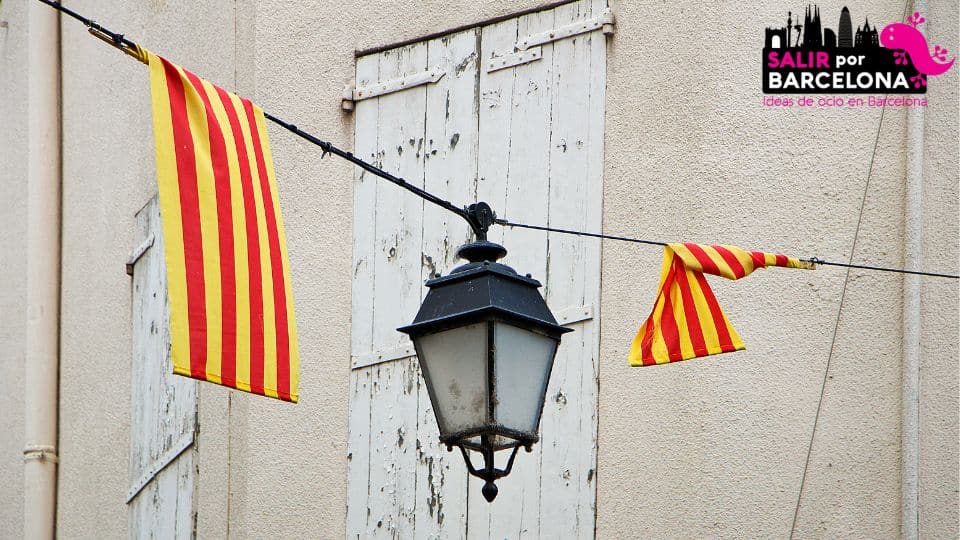In Barcelona, Catalonia’s largest and most diverse city, alarm bells are ringing about the future of the Catalan language. The results of a recent municipal survey have put a worrying reality on the table: more than half of the city’s inhabitants consider Spanish to be their main language. This data has generated concern, not only among defenders of the Catalan language, but also among local authorities, who see how the presence of Catalan in the daily life of the people of Barcelona is decreasing year after year.
 Catalan in decline: a look at the figures
Catalan in decline: a look at the figures
The survey reveals that 55.9% of Barcelona residents use Spanish as their usual language, while only in the neighborhood of Gràcia is Catalan still the predominant language, with 52.9% of speakers. Other neighborhoods such as Les Corts, Sarrià-Sant Gervasi and l’Eixample, although with higher than average figures, barely exceed 40% of regular Catalan speakers. However, in other neighborhoods such as Horta-Guinardó, Sant Andreu and Sants-Montjuïc, the use of Catalan is between 36% and 40%, while in Ciutat Vella and Nou Barris, it barely reaches 19.5% and 17.7% respectively.
These figures not only reflect a decline in the use of Catalan, but also a worrying trend that seems to be worsening over time.
Factors behind the decline
The deputy mayor of Barcelona, María Eugenia Gay, has not hesitated to describe this situation as a setback in the use of Catalan. One of the factors that has been pointed out as a cause of this decline is the cosmopolitan character of the city. With 55% of the population born outside of Catalonia, it is logical to think that linguistic and cultural diversity influences the language preferences of the people of Barcelona.
The Linguistic Challenge in the Catalan Health Care System: The Promotion of Catalan
In addition, the lack of interest in learning or improving Catalan among the youngest is another major challenge. More than half of the inhabitants between the ages of 15 and 29 have expressed that they have no interest in Catalan, which further aggravates the situation. This lack of interest not only reflects a lack of connection to the language, but also to an essential part of Catalonia’s cultural identity.
Measures to promote the use of Catalan
Faced with this reality, the Barcelona City Council has been quick to react. On June 6, a non-permanent study commission was held with the aim of promoting the presence of Catalan in the digital environment and in new technological formats. The commission seeks to promote the use of Catalan in video games and among content creators, spaces where young people spend a large part of their time. Support for these measures has been broad. Parties such as the PSC, the Comuns, Junts per Catalunya and Esquerra Republicana have backed the creation of this commission, seeing it as an opportunity to reverse the negative trend. The objective is clear: to maintain and, if possible, increase the use of Catalan among the young population, which is the one that is abandoning the language the most. On the other hand, parties such as PP and VOX, although not directly opposed to these measures, have pointed out that the fall in the use of Catalan is the result of the linguistic policies promoted by the Generalitat over the last 40 years. These parties suggest that the imposition of Catalan in certain areas has generated an adverse reaction, especially among those who do not have Catalan as their mother tongue.
The challenge of keeping a language alive
For centuries, Catalan has been a fundamental part of the Catalan identity. In Barcelona, a city marked by diversity and dynamism, the challenge is even greater. Competition with Spanish, a widely spoken and dominant language in many areas, as well as the growing influence of other languages due to immigration, make the future of Catalan uncertain.
Preserving the Catalan Language: The Challenge Among Young Catalans
However, the current situation should not only be seen as a threat, but also as an opportunity to rethink how language use is promoted. The Barcelona City Council seems to be taking the right direction by focusing on young people and new media, but much work remains to be done. Ultimately, the future of Catalan in Barcelona will depend on the ability of society and institutions to adapt to change and find new ways to promote the language. It is not just a matter of imposing the use of Catalan, but of making it attractive and relevant to the new generations. This is the only way to ensure that Catalan remains a living and vibrant part of Barcelona’s identity.



